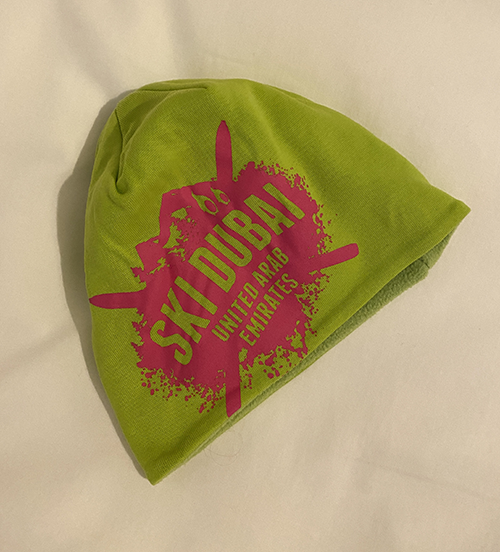How to make sure you bring home something that’s meaningful instead of a piece of junk you’ll wrap up for next year’s White Elephant Gift Exchange.
When I was young, I thought the word memento was spelled momento. It made sense to me; the object was a reminder of a special moment.
In the Global-Amazon-Prime-Almost-Anything-You-Want-In-Two-Days world we live in, buying something made in Paris, Tokyo, or Cape Town perhaps isn’t as unique as it once was. Still, acquiring souvenirs on your journeys can be a very fun aspect of your trip. If you remember what it felt like to ride your bike over cobblestones to the shop where you bought those bike socks with Pisa’s famous tower on them or the taste of the espresso the leather shop in Florence served you while you were picking out that pair of boots, those are successful souvenirs.
Here are some of my tips for finding them.
1. Buy items you will actually use.
When I’m making pasta I don’t like to set the spoon I’m stirring it with on the counter. And I’m a fan of Edvard Munch.

So this “Scream” spoon rest was a great find. Cheesy? You bet. But every time we use it, Husband and I end of chatting about our trips to Oslo. Ditto with the chopsticks I bought in Japan. Using them to eat take-out on the patio transports me right back to Tokyo.

And the ski hat I bought in Dubai reminds me of schussing down refrigerated indoor slopes beside penguins.
- Buy smaller items.
Smaller souvenirs take up less space in my luggage (and my house when I get home). Earrings and scarves are favorite items of clothing to buy. (Confession: there’s been a leather jacket or two from Italy, too.) Both can reflect the culture where they were made. And souvenirs don’t always have to be purchased. I picked up a shell in Australia with whorls that look like my and Husband’s initials. It’s on the library windowsill and reminds me of that day on the beach when the world on the other side of the glass is covered in snow.
You can choose to have your purchases shipped home (I’ve done this with rugs from the Middle East), just make sure you’re aware of total cost (shipping, packaging, and insurance) and any regulations before making a purchase.
Another thing to keep in mind: make sure your souvenir is legal, both to be taken out of the country you’re visiting and brought back into the USA. Shells and coral from the Caribbean may be confiscated at your departure airport; entering the USA with a cache of Cuban cigars may be a problem. And wine and caviar lovers? Check the quantity you’re allowed to import.
- Buy local items you can’t get online, especially edible ones.
Not only are you supporting the local economy, but you end up with something unique.

In addition to markets, another great place to look for souvenirs is drugstores and variety stores. Snacks you can’t readily get in the US make popular gifts. The 100 Yen (Japan’s dollar store equivalent) in Tokyo yielded a small cat-shaped humidifier with steam vents in the cat’s ears for $20 (perfect for my niece’s dry dorm room), apple-pie KitKats, matcha Oreos, and scallop-butter-flavored pretzels. (Don’t knock ‘em until you try ‘em!)
Finds in an Australian 7-11 equivalent included a Sunnylife inflatable beach pillow, Tim-Tams (two malted biscuits stuck together with chocolate cream filling, coated in chocolate), and Grown Alchemist (cult Aussie skincare line) lip balm.
Don’t worry that food items aren’t long-lasting. They extend the memory of your trip as you enjoy them.
4. Buy something that evokes a memory.
My bonus daughters (my term for my two lovely stepdaughters) bought me a small painting of La Sagrada Família (Gaudi’s amazing church) when we were in Barcelona together. Is it by a famous artist? No. But every time I look at it I’m reminded how wonderful it was to take them on their first trip to Europe and how much fun we had strolling along Las Ramblas that day.
- Buy something for a collection.
A friend of mine loves pens from different places. It’s a fun project to visit market stalls looking for a writing instrument I think she’ll like. (Note: I didn’t realize the pen I bought in Macau was a “tip and strip,” revealing a naked woman when turned upside down. She uses it at her office, confident no borrower will forget to return it!)
Whether you’re into snow globes (note: these are not carry-on friendly) or soccer jerseys, adding to your collection is a fun way to memorialize your trips.
- Take a great photo or buy a postcard.
You may not think of photos as a souvenir, but they are some of the best reminders of and connections to our past travels. To make them more special, consider printing them out and displaying them.
I have a lighted string with clips tacked up on the wall by the back door. It displays an ever-changing array of our travel photos and postcards. I also shot photos of Husband mimicking the pose of statues around the world, which I had bound into a photo book for a silly anniversary present.
- Avoid buying something obviously a souvenir.
I’m not one for a bag that says Paris a hundred times all over it. Especially when the label inside says Made in China.
 That said, I couldn’t resist buying this Mao cap in Beijing marked Made in Vietnam. A teenaged cousin loved it!
That said, I couldn’t resist buying this Mao cap in Beijing marked Made in Vietnam. A teenaged cousin loved it!
Twist’s Take: Bring home stuff you’ll want to keep!
